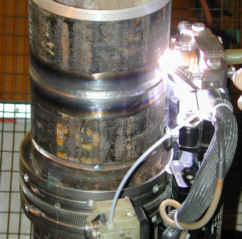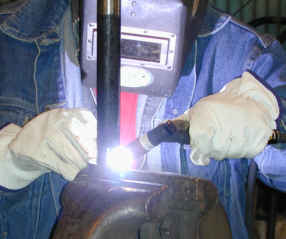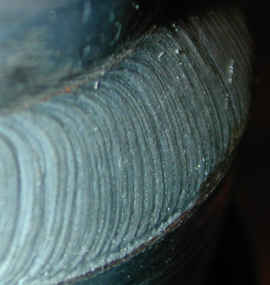GTAW Welding
| Gas Tungsten Arc Welding (GTAW) is frequently referred to as TIG welding. TIG welding is a commonly used high quality welding process. TIG welding has become a popular choice of welding processes when high quality, precision welding is required. In TIG welding an arc is formed between a nonconsumable tungsten electrode and the metal being welded. Gas is fed through the torch to shield the electrode and molten weld pool. If filler wire is used, it is added to the weld pool separately. | |
TIG Welding Benefits
Shielding Gases
Helium is generally added to increase heat input (increase welding speed or weld penetration). Hydrogen will result in cleaner looking welds and also increase heat input, however, Hydrogen may promote porosity or hydrogen cracking. GTAW Welding Limitations
| |
Common GTAW Welding Concerns
We can help optimize your welding process variables. Evaluate your current welding parameters and techniques. Help eliminate common welding problems and discontinuities such as those listed below:
Weld Discontinuities
TIG Welding Problems
| |
If your company is experiencing these or other welding problems you can retain AMC to improve your weld processing. Hire AMC to act as your welding specialist.




No comments:
Post a Comment